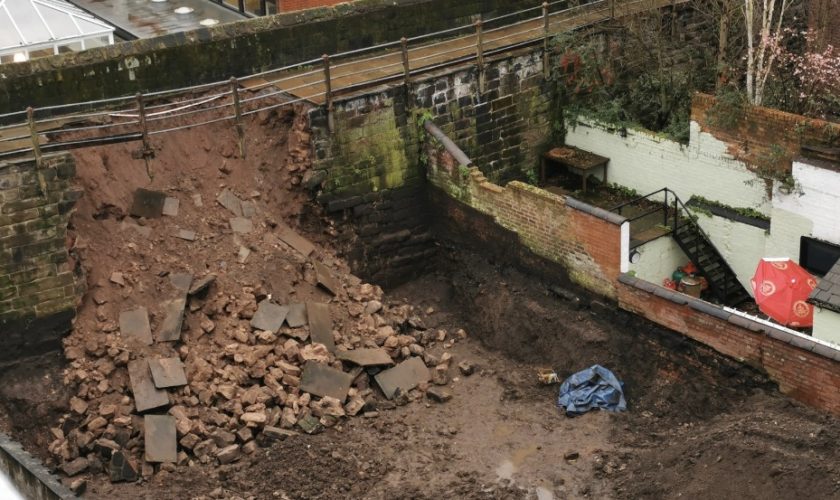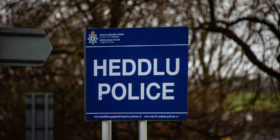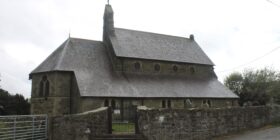Chester Council takes legal action to restore historic City Walls after 2020 collapse

The council in Chester is looking to take legal action in a bid to complete repairs on the historic City Walls.
In 2020 a section of the wall collapsed close to the famous Eastgate clock. Cheshire West and Chester Council (CWaC) engineers, alongside external specialists, designed and built scaffold propping to prevent the outer wall from collapsing too.
To ensure that residents, visitors and businesses can still benefit from and enjoy this section of the walls a temporary walkway was incorporated into the scaffold propping.
The scaffold was carefully designed to protect the Wesley Church Centre, taking into account crypts and other buried archaeology between the Church and the City Walls, and maintaining a fire escape route for the surrounding buildings.
The Chester City Wall is a Scheduled Monument of national and international importance and is also Grade I/II listed. Scheduling is a legal protection administered by Historic England on behalf of the Secretary of State for Culture, Media and Sport.
All changes to the Wall including maintenance and repair work, need Scheduled Monument Consent from the Secretary of State.
Since the collapse near to the Eastgate Clock, CWaC has been considering potential legal action as it is understood that there are grounds to investigate negligence by a third party which may have contributed to the collapse of the City Walls.
CWaC began a legal process to seek recovery of costs from those third parties who are believed to be responsible for the collapse, letters of claim have been issued. The prospective defendants deny wrongdoing.
The site of the collapse is landlocked; for a significant amount of time, CWaC has been seeking access from the owners of the land where the collapse occurred, however this has been denied. Alternative access arrangements are being negotiated with other landowners. As access has not been granted, legal options are being progressed to enable access to the site to carry out inspections, and possible remedial works.
CWaC said it “will continue to pursue every avenue available to ensure that the City Walls, an internationally recognised heritage asset is preserved and maintained to the highest standard.”
“An engineering repair scheme is well developed and will be ready to start on site when the legal and access issues have been resolved.”
“More scaffold propping has been designed to support the partially collapsed inner wall to prevent any further damage, with a roof added for further protection. This will be installed in the first phase of the repair work.”
CWaC said: “Every day of the year a lot of work goes on behind the scenes to care for the City Walls to keep them protected as well as safe for the estimated three million visitors and residents who walk the walls annually. A team of engineers, including a specialist conservation accredited engineer, carries out structural inspections and daily safety checks, and prioritises repair works to target limited resources where they are most needed.”
The City Walls, and their towers and gates, comprise 117 separate structures.
Each structure is inspected once every two years to assess their durability and condition, and to look for any changes since the previous inspection.
The results of the inspections allow major and routine work to be planned and prioritised to target resources most effectively.
Between 2013 and 2022 CWaC says it spent in excess of £6.1 million in the upkeep and repair of the walls.
“Annual spend on capital works is now £300,000 and on revenue works, £60,000.”
“To put this into context, the value of the capital works outstanding is currently £10.5 million of which £3.8 million is work that is considered essential in the short-term.” The Council said.
In addition to the daily checks and maintenance, there are several key activities planned for this year, this includes:
- St Martin’s Gate (1966 bridge) Steps – feasibility study and repair
- City Wall Assessment – risk assessment inspection and report
- Wall west of Northgate – options appraisal and design of permanent repairs
- Essential preventative (routine) maintenance
- Statement of Significance – to prepare for a full review of the legal protections covering the wall and buried archaeological remains
[Photo: Sam Warrenger]
Latest News









